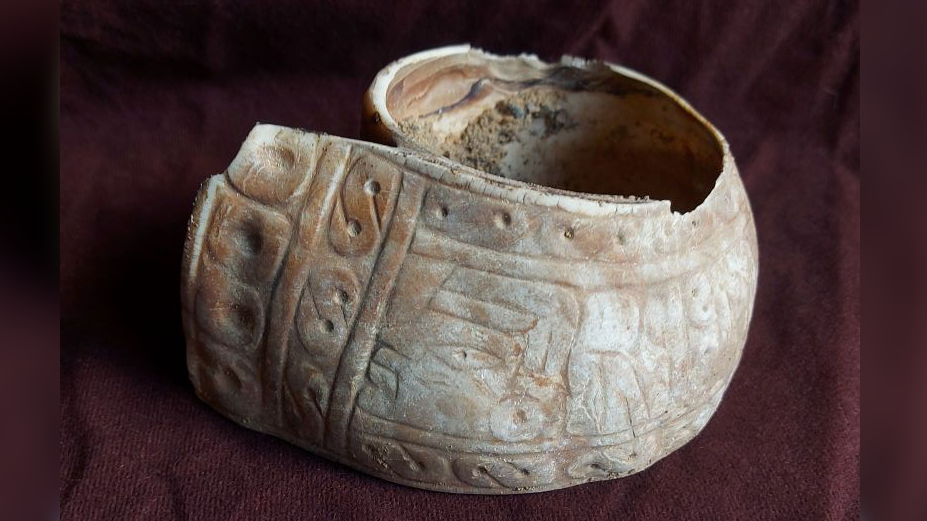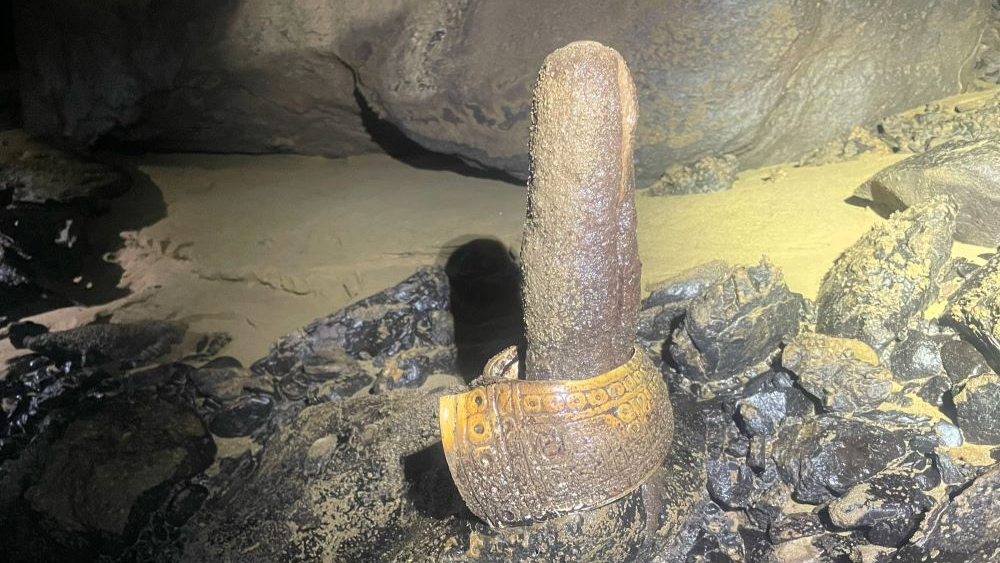While investigating a cave high in the mountains of Mexico, a spelunker thought she had found a pile of trash from a modern-day litterbug. But upon closer inspection, she discovered that the “trash” was actually a cache of artifacts that may have been used in fertility rituals more than 500 years ago.
“I looked in, and it seemed like the cave continued. You had to hold your breath and dive a little to get through,” speleologist Katiya Pavlova said in a translated statement. “That’s when we discovered the two rings around the stalagmites.”
The cave, called Tlayócoc, is in the Mexican state of Guerrero and about 7,800 feet (2,380 meters) above sea level. Meaning “Cave of Badgers” in the Indigenous Nahuatl language, Tlayócoc is known locally as a source of water and bat guano. In September 2023, Pavlova and local guide Adrián Beltrán Dimas ventured into the cave — possibly the first time anyone has entered it in about five centuries.
Roughly 500 feet (150 m) into the cave, the ceiling dipped down. The pair of explorers had to navigate the flooded cave with a gap of just 6 inches (15 centimeters) between the water and the cave ceiling. “Adrián was scared, but the water was deep enough, and I went through first to show him it wasn’t that difficult,” Pavlova said.
While taking a break to look around, Pavlova and Beltrán were shocked to discover 14 artifacts.
“It was very exciting and incredible!” Pavlova said. “We were lucky here.”
Related: 2,500-year-old burials of 3 people discovered in a cave in Mexico

Among the artifacts were four shell bracelets, a giant decorated snail shell (genus Strombus), two complete stone disks and six disk fragments, and a piece of carbonized wood. Pavlova and Beltrán immediately contacted Mexico’s National Institute of Anthropology and History (INAH), which sent archaeologists to recover the artifacts in March.
Given the arrangement of the bracelets — which had been looped over small, rounded stalagmites with “phallic connotations” — the archaeologists speculated that fertility rituals were likely performed in Tlayócoc cave, they said in the statement.
“For pre-Hispanic cultures, caves were sacred places associated with the underworld and considered the womb of the Earth,” INAH archaeologist Miguel Pérez Negrete said in the statement.
Three of the bracelets have incised decorations. An S-shaped symbol known as “xonecuilli” is associated with the planet Venus and the measurement of time, while the profile of a human-like figure may represent the creator god Quetzalcoatl.
Pérez dated the artifacts to the Postclassic period of Mesoamerican history, between A.D. 950 and 1521, and suggested that they were made by members of the little-known Tlacotepehua culture that inhabited the region.
“It’s very likely that, because they were found in a close environment where humidity is fairly stable, the objects were able to survive for so many centuries,” Pérez said.
Ancient Maya quiz: What do you know about the civilization that built pyramids across Mesoamerica?
